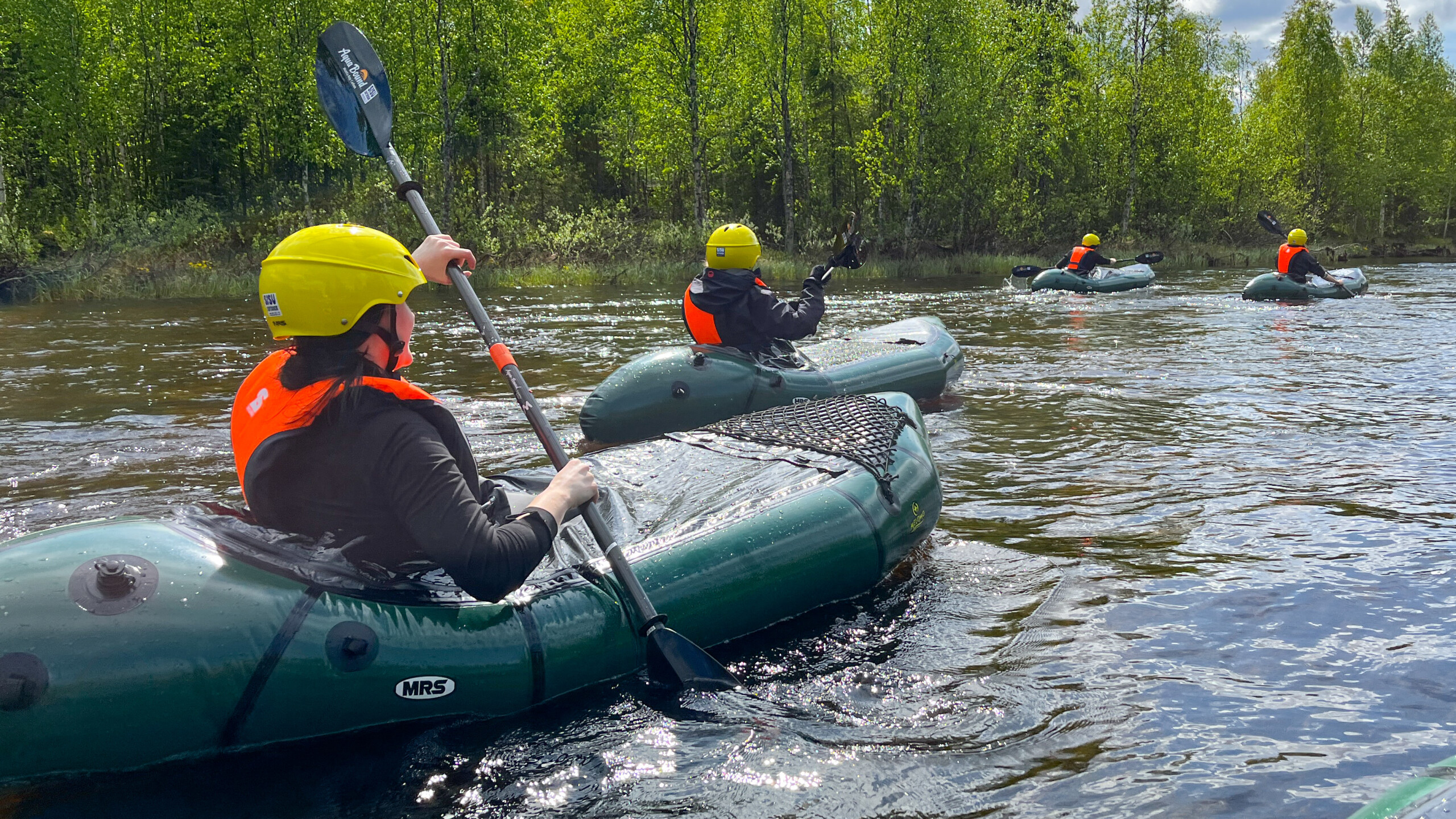My friends and I walk into the courtyard of Sisu Outdoor and I am greeted by Maikku, dressed in bib overalls and a big smile. On the ground, a pile of green plague-ridden nylons is lying around – empty packraft, more commonly known as backpacking boards.
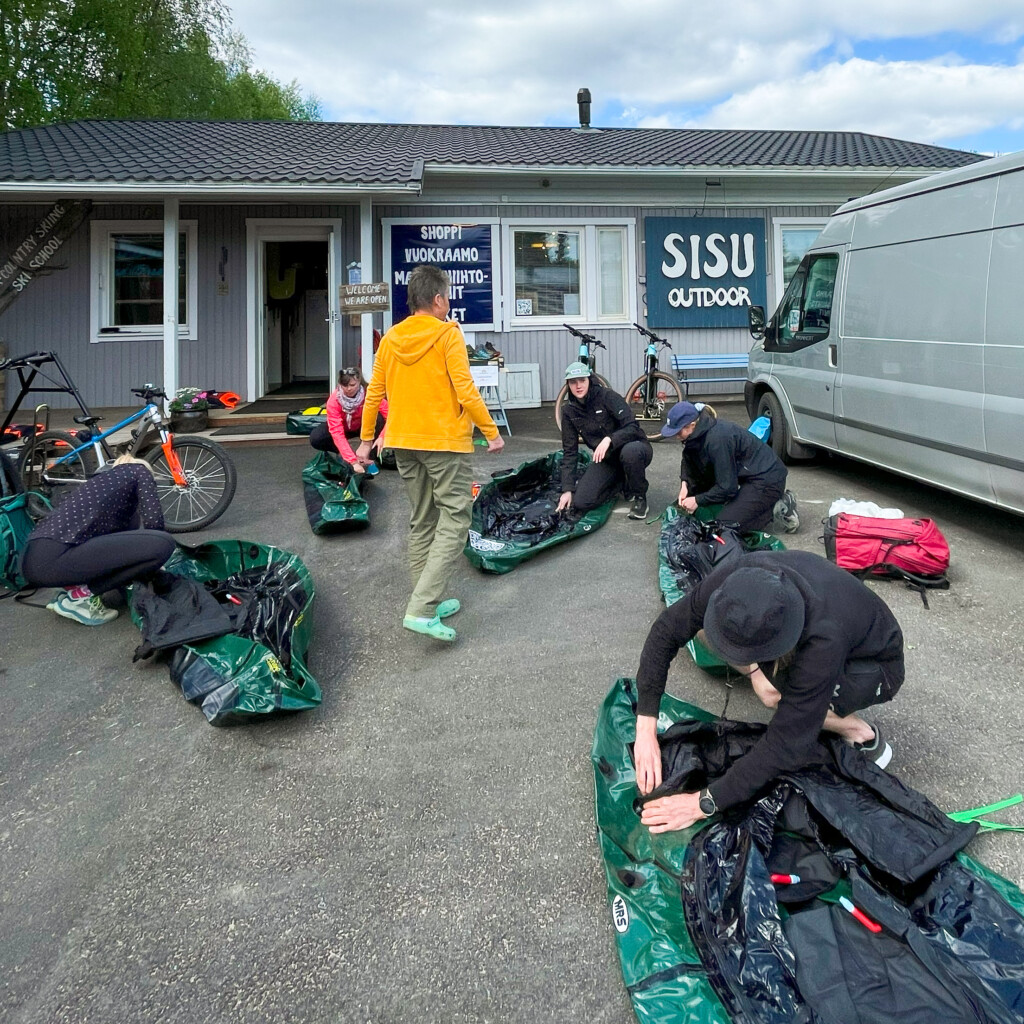
The right size vessel is chosen for each person and instructions are given on how to make it seaworthy. You can use either a rechargeable pocket-size pump or a filling bag, which is like a small garbage bag with a valve. I want to try the traditional way. The filling bag is attached to the packcraft and scooped full of air. The mouth is rolled up and the air is squeezed out of the bag and into the board. Sounds complicated, but in reality the raft fills up in a couple of minutes, even faster than using a pump. Finally, you fill the backrest and seat, put on your life jackets and helmets and head for the shore. Let the trip begin!
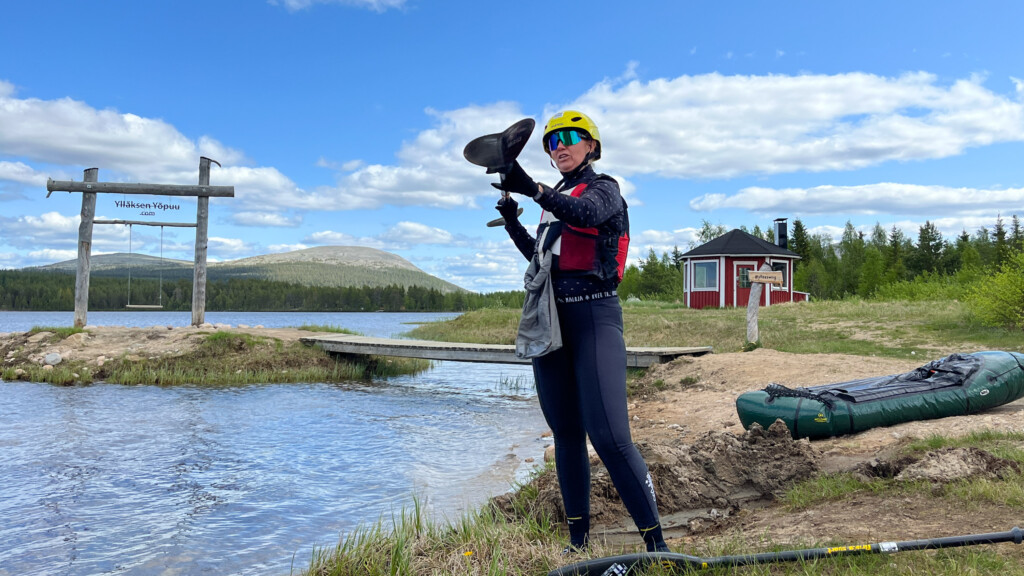
Boats on the water
We lower the packcrafts into the water and climb aboard. As if on a deck, a waterproof cloth is attached to the feet to prevent any splashing water from soaking the clothes. A gap in the cover is not compulsory and in hot weather the splashing water is gladly accepted. For now, the water is still cool and it’s nice and warm under the blanket.
The stability of the raft is surprising. It doesn’t bob and sway in the same way as a kayak or rowing boat. At the same time, however, it glides gently on the surface of the water as the paddle picks up speed.
“A paddle is not supposed to pull, but to push. Think of fisting the air in front of you with the opposite hand” is the instruction. As the air rushes in, the journey slows towards the early summer flow of the Äkäs River.
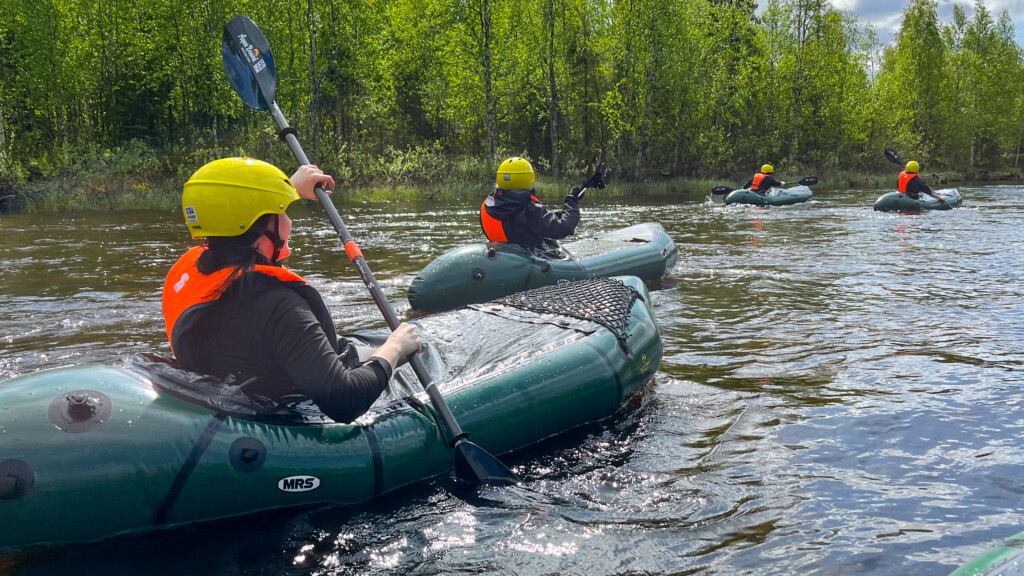
The spring floods have begun to recede in the distance and the river is flowing gently and smoothly. The sun reflects off the surface of the glistening water and the birds sing their early summer songs. A few large rocks are visible below the water and the water gushes over them. Avoid paddling over them. Not that your packraft will tip over or break if it hits a rock or sandy bottom. It may be difficult to get over the rocks. With a few mistakes, we learn to follow the water and steer past the rocks.
Through the gullies to the marsh shelter
“Remember that the paddle is one of your support points. Keep one end of the paddle in the water at all times,” we are instructed as a small line buzzes in front of us.
The Packcraft skims along nimbly but steadily with the current, splashing water in our faces. A few shrieks of mixed excitement can be heard behind us. The waves are small and the raft is virtually impossible to capsize. Still, the pit of your stomach tingles. When the current calms to a gentle swell, laughter breaks out. That was great!

In the shelter of the swamp, I lean back on the stern of the packcraft and let the sloshing water rock the raft. The sea fans growing on the bank sway to the river’s movements and the sun warms my face. First lunch break. We guide the packcrafts onto the riverbank. In a stronger current, you’d need something to hold on to, but at the edge of the swamp the rafts hold themselves in place. A bag of buns is dug out from under the gap cover. Soon a bun or two will be flying through the air: everyone will get their own. Water bottles have been reminded on departure, and for good reason. The sun, shining full in the sky and reflecting off the dark surface of the water, makes the sweat flow.
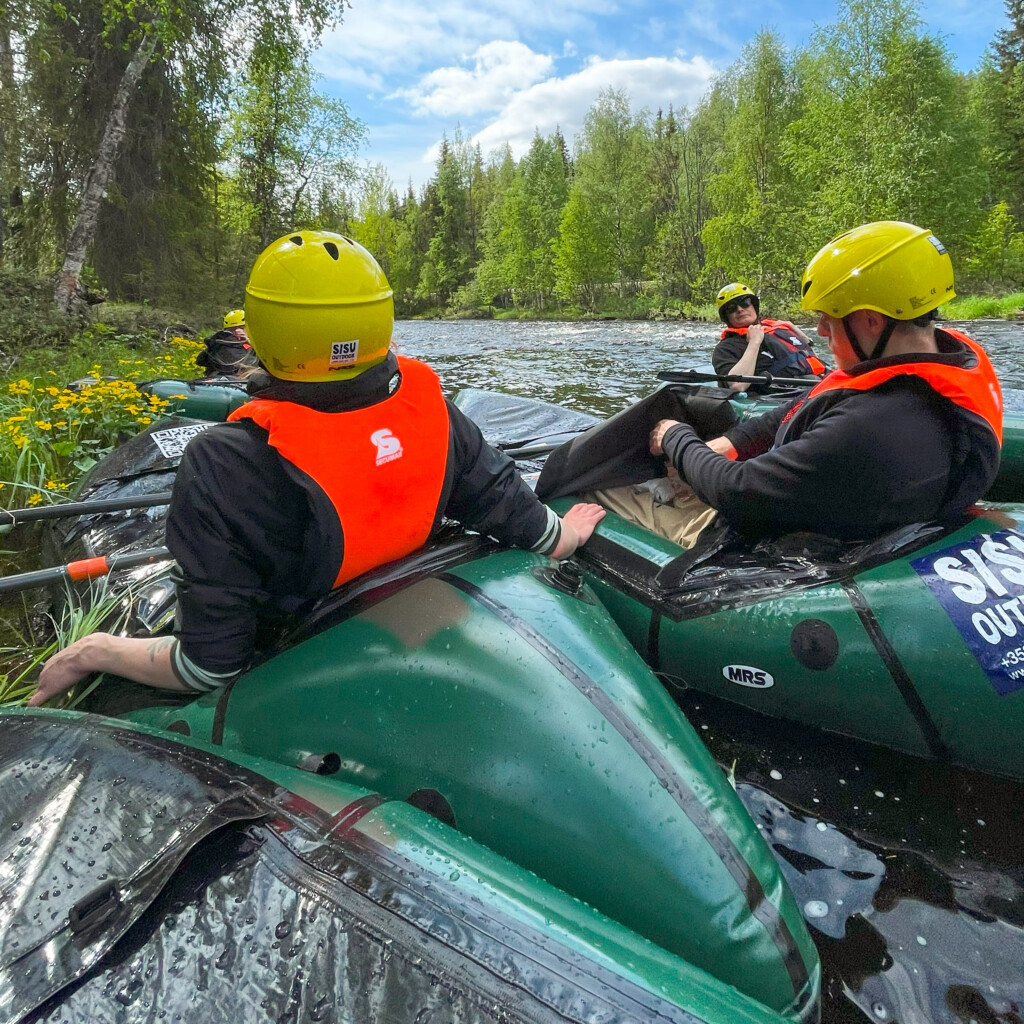
Confidence grows as the flow progresses
The further the river takes us, the more confident I become – I’m starting to trust that the packraft will glide smoothly like a train, even backwards, in a stronger current. Sometimes I paddle actively, sometimes I let the river take over and just steer the raft past the rocks. A fisherman in waders stands in the river. We greet him and ask if he’s been feeding. Two undersized bass, he says. My friend glances at his sports watch: it’s already more than 10 km behind us. It feels much less. The end of the trip is approaching and we call for a ride.
We guide the packcrafts onto the beach between two large rocks. Just in case, I throw my shoes on the flat ground and clumsily climb onto the beach. Fortunately, my feet stay dry. I lift the raft out of the river and help my friend safely to shore. The raft is light, weighing only a few kilos. I guess that’s why it’s a backpacker’s raft: small, light and quick to fill, it can be carried in a rucksack.
We open the raft’s valves and the air flows out with a splash. We press the rafts into the pond and roll them up into tight packages – a bit like deflating an air mattress. We lift the six quickly emptied packcraft onto the back of the van and jump on board ourselves. Seven people and half a dozen backpackers and their paddles easily fit in, and it’s not even cramped! On the way back to the village, we chuckle with excitement and eat the last of our snacks.
The opinion of the packcraft is unanimous: incredibly practical and surprisingly stable and handy. Perhaps even the best tool for navigating the waters of the Ylläs region!
Packraft
- A couple of kilos of inflatable transport for the water
- Works best in streams, as it is lighter and slower to paddle
- Easy and nice, perfect for first timers
- Packs down small, easy to carry
- Season: May to October, when waters are ice-free
